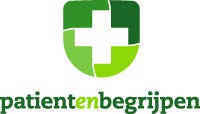Better communication with the patient to provide real shared decision making
In collaboration with the patient association Foundation for patients with digestive tract cancer (SPKS) and the Healthcare Team of the UMC Utrecht, Patientenbegrijpen has developed a platform. This platform offers an accessible way of information by video from the moment of referral up to and including aftercare at home to be well informed about their treatment process. This platform is now used in regional cooperation and we are able to inform 85% of patients better and faster. This has many advantages; less stress for patients and family, better conversations in the consultation room, real joint decision-making through advance information and significant time savings.
Billions are invested in improving and developing treatment methods. Hardly any money or time is spent on improving communication between hospital and patients. Many hospitals still work with leaflets and especially many “send” in the verbal conversations. Strange actually, even though we know that the concentration in patients with oral transmission is very low and a large part of the patients do not understand the current information. Together with the patient association and care teams, we have started to develop a method that works for patients, but that the care team can also easily apply. What contributes to improving patient information uptake? Which way of information works then? And what does that mean for the care team?
In the meantime, two years of experimentation and work on a platform where patients receive the correct information in video messages. Your own playlist of information that can always be supplemented by the care team depending on the treatment process. The patient can view the information on their own time and on any online device. No login or download is required. The patient can share the information with family, very easily. The information is about reaching the hospital, the route to the ward, the examinations, treatments and aftercare.
In addition, it is possible that collaborating hospitals in the platform can work on information provision for the same patient. So regardless of the referral, the patient continues to view the information on one playlist.
The advantages at a glance:
1) Shortening of the conversation in the consultation room by 15 to 30 minutes per conversation. Medics no longer need to explain what to expect and decide on a patient, the patient has already seen this information before the interview.
2) Increase in the quality of the conversations. The information is always given in the same way, nothing is forgotten. With a well-informed patient, the conversation is also better conducted and the aspects that are important to a patient are discussed;
3) The patient is a discussion partner (participation). A well-informed patient is better able to ask questions in a conversation with the physician and better orientate on the options
4) Increase “job satisfaction”. Doctors no longer have to tell the same story to multiple patients in one day. We conclude from the response that doctors experience better conversations because there is more time to listen to the patient.
5) Less telephone questions. The nurses and outpatient staff receive far fewer questions because the discussion in the consultation room is better prepared and the patients can remember or review the information much better.
6) Care takers know exactly what has been told about each other. This gives much more confidence during the treatment process. The information has already been given to patients in advance. A patient can no longer indicate that certain information has not been disclosed. That gives peace of mind.
7) Patient association is very enthusiastic. Communication is one of the core agenda items for many patient associations. In this collaboration, the patient association can contribute ideas about improving communication. In addition, the platform also offers space for the patient association to profile itself, so that patients contact them more quickly
This platform is now active in the RAKU collaboration (Regional collaboration of cancer treatment in Utrecht). In four hospitals, care teams actively work together to improve communication with patients.
In the videos, doctors prominently tell the information necessary for the patient to know / know. We are especially proud that the collaboration between hospitals, patients, patient association and sponsors has resulted in a win-win situation. The collaboration creates joy among all stakeholders. And in a period when the workload is high and budgets are under pressure, this is a huge boost. Change is fun!
The biggest barrier is that in this case communication is seen as a problem for the communication department. However, it is an improvement of the primary process. The problem holders are the doctors themselves. Getting all stakeholders to the table and understanding the problem has resulted in a workable process.
Upscaling
This project can be translated 1-on-1 to all other departments and / or to other hospitals.
Change approach

